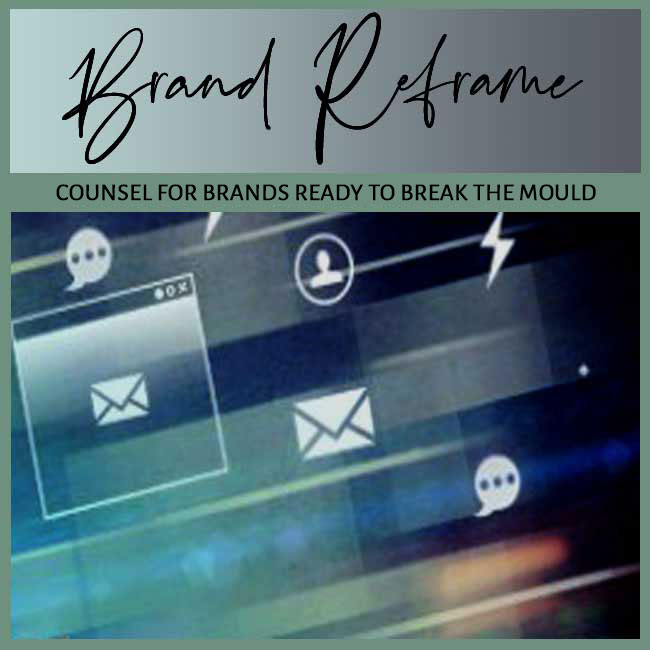
FOCUS: BRAND DRIFT PROBLEMS | AUDIENCE: STEWARDS OF PLATEAUED BRANDS
BY: SHOBHA PONNAPPA | BRAND BREAKTHROUGH STRATEGIST | 45 YEARS | 125+ CLIENTS
I answer 6 tough questions about how outdated brand language quietly erodes audience connection … and how to regain relevance.
I often meet brand stewards who insist their tone has always worked. They proudly recall legacy campaigns, classic taglines, and familiar phrasing that once won attention. But today’s audiences scroll past, tune out, or simply forget. This isn’t just wear and tear … it’s a sign of Brand Drift. In this post, I break down the six most urgent questions I get asked when familiar brands start to sound unfamiliar … even to their own followers.
It usually shows up as diminishing emotional engagement. Audiences no longer react the way they used to. Familiar phrases that once sparked recognition now feel stale or vague. If your copy feels templated or your tone sounds like it belongs to another era … you’re facing a relevance problem, not a writing one.
You might still be getting views or traffic, but not the kind that converts or sticks. Outdated language often hides in plain sight, wrapped in brand nostalgia. It comforts the team internally … but leaves the audience cold externally. That internal misalignment is often the first signal a brand needs a sharper lens.
Language ages fast. What once felt fresh becomes cliché. Over time, shifts in culture, context, and competition can strip old phrases of their spark. Words that once reflected leadership may now read as pompous or disconnected.
There’s also the danger of category mimicry. If newer brands start copying your once-distinct language, you sound less unique without even changing a word. Staying ahead of the curve means sensing when the conversation has moved … and knowing how to re-enter it. If you’re not actively shaping the conversation, you’re passively being replaced in it.
You can … but only if you understand the strategic root of your tone. Vocabulary is just the surface. Most outdated language problems trace back to unclear audience positioning. If you don’t know exactly who you’re speaking to today … and what they now expect … new words won’t fix the disconnection.
When I help brands refresh their tone, it’s never just a rewrite. It’s a repositioning of how the brand sees itself and how it wants to be seen. Only then does new language land with authenticity. A powerful tone of voice is always anchored in clarity, not just copy.
The trick is to retain core emotional anchors while shifting verbal style. I often ask: what feeling did your old language used to evoke? Pride? Trust? Delight? That feeling must remain … even if the phrasing changes.
Modernising a voice doesn’t mean erasing identity. It means translating it better for today’s ears. If done well, your brand can feel like itself again … only clearer, sharper, and more resonant. The right tone can bridge nostalgia and now, honouring the past while signalling growth.
I’ve seen legacy brands transform perception by switching from instructional to invitational tones. For instance, turning “Here’s what we do” into “Here’s how you win with us” … or “Our heritage matters” into “Why our roots still work for you.”
Even micro-changes in headline framing, call-to-action tone, and product naming can refresh your identity without causing confusion. It’s not about sounding trendy … it’s about sounding attentive. Language isn’t decoration … it’s direction.
Every two years is a safe rhythm. But if your industry is fast-moving, or your audience is evolving quickly, yearly reviews help. Don’t wait for a crisis. If internal teams are starting to feel restless or your creative output feels recycled … it’s time.
The strongest brands don’t just preserve language … they prune, evolve, and fertilise it like a living thing. Voice isn’t a one-time asset. It’s a strategic lever that needs care. A regular tune-up prevents costly overhauls later.
If these questions ring true, your brand voice isn’t broken … it’s just behind. A deliberate refresh can restore not just relevance, but energy, relatability, and trust. One precise shift in tone can open up new connection. You have to try it before you see the difference!
If you’re an investor seeking momentum for your portfolio brands, this FAQ Insight Post I wrote could interest you: “FAQs: Why a Great Product Still Feels Forgettable After Launch.“
And if you’re a solo expert looking to sharpen traction, this FAQ Insight Post I worked on may resonate: “FAQs: Why Some New Brands Speak Before They Understand.“

"One BIG IDEA can turn brand stagnation into unstoppable movement. Spots are limited each week ... book your breakthrough session now."
Shobha Ponnappa
More Breakthrough Ideas … Case Studies & FAQs … from the Brand Drift Problems Category
Case Studies
FAQ Insights
Smart insights, real-world frameworks, and idea-driven clarity – designed to help brands move.
Get my fortnightly Brand Reframe newsletter. Smart insights, distilled thinking, and focused momentum to help your brand lead.

Get my free AI strategy guide. Smart prompts, sharper briefs, and practical ways to make AI support your brand momentum.

Just fill in the form to join. Get my newsletter and the guide shown alongside, all with several game-changing tips.